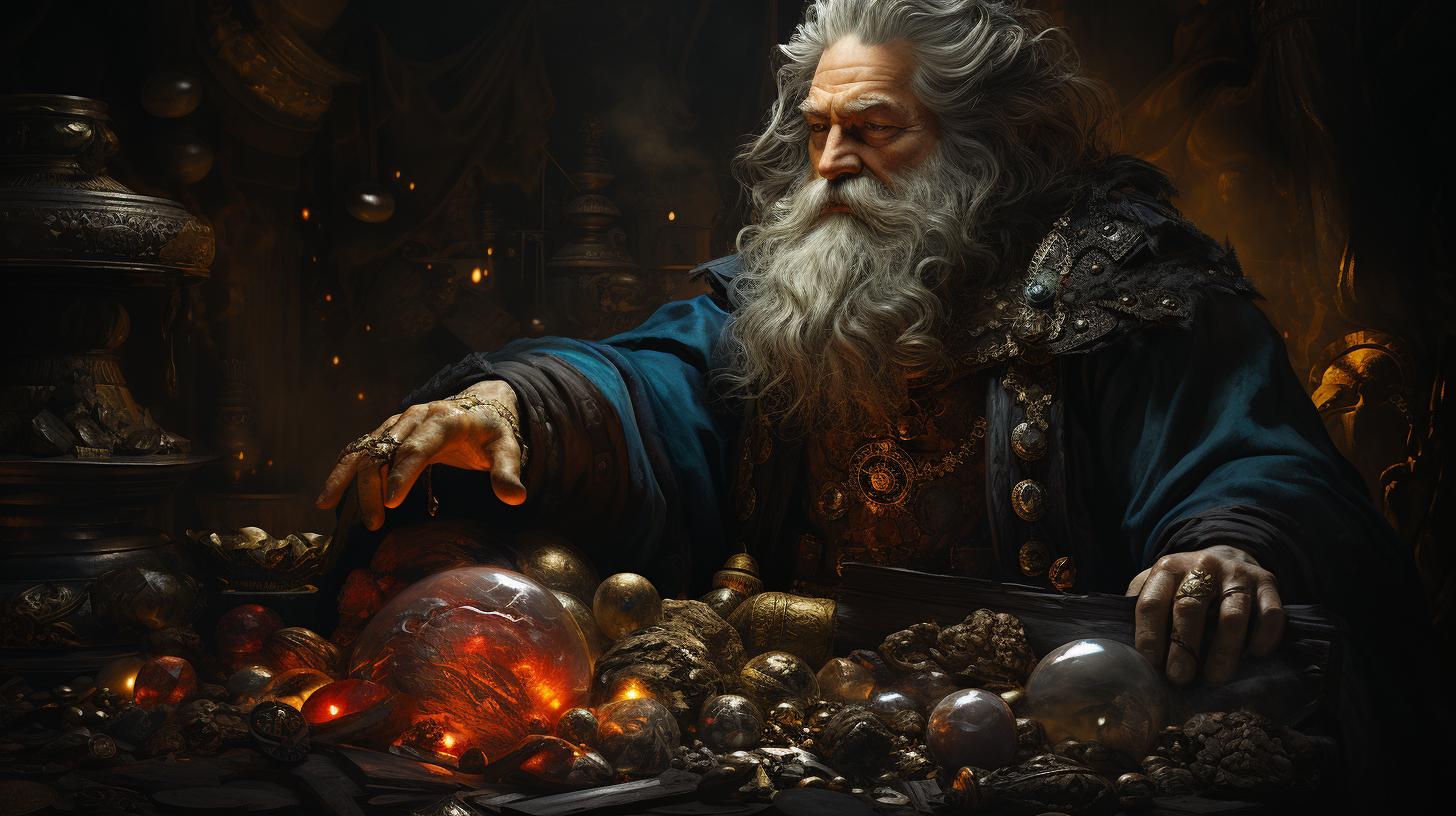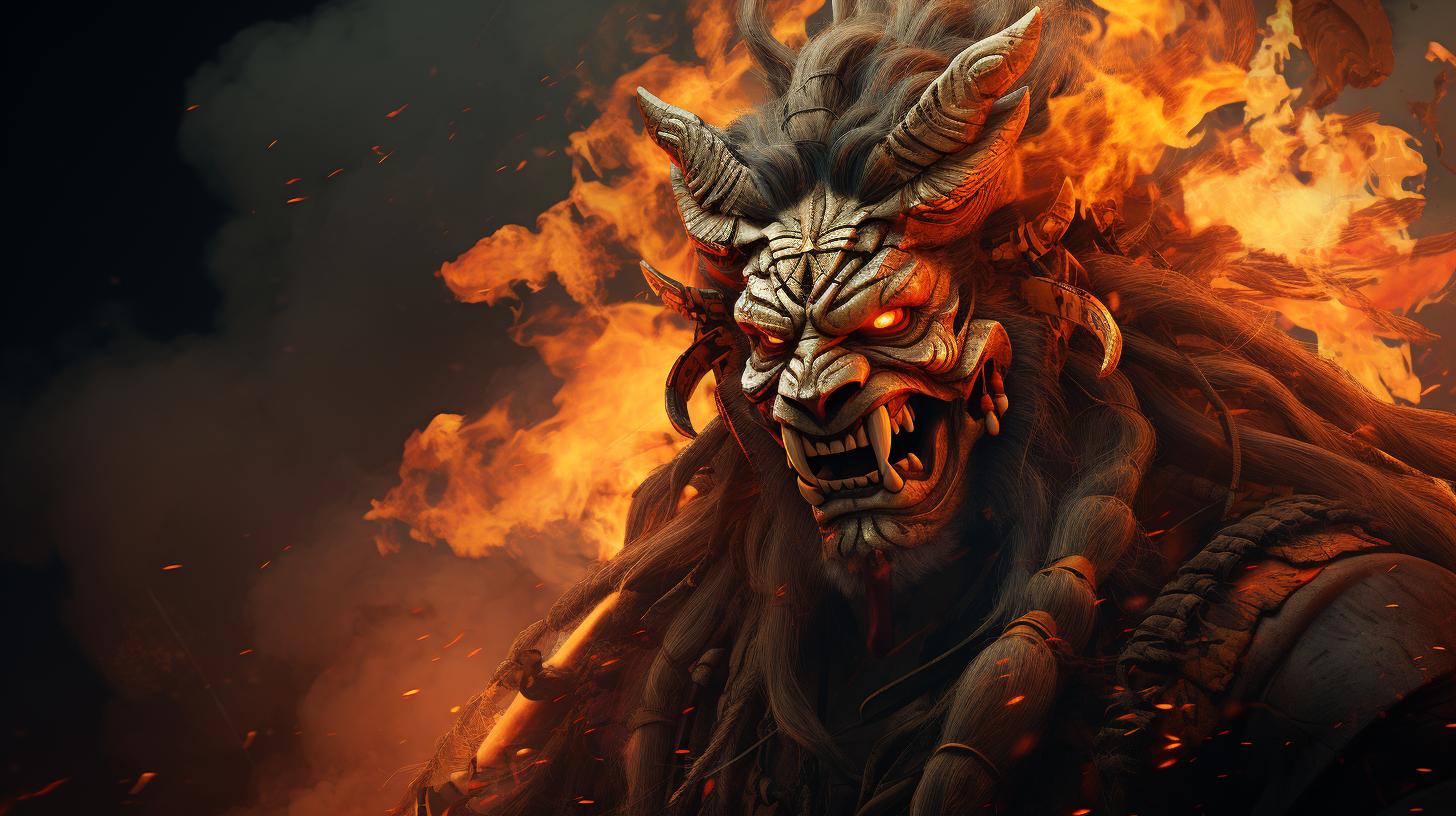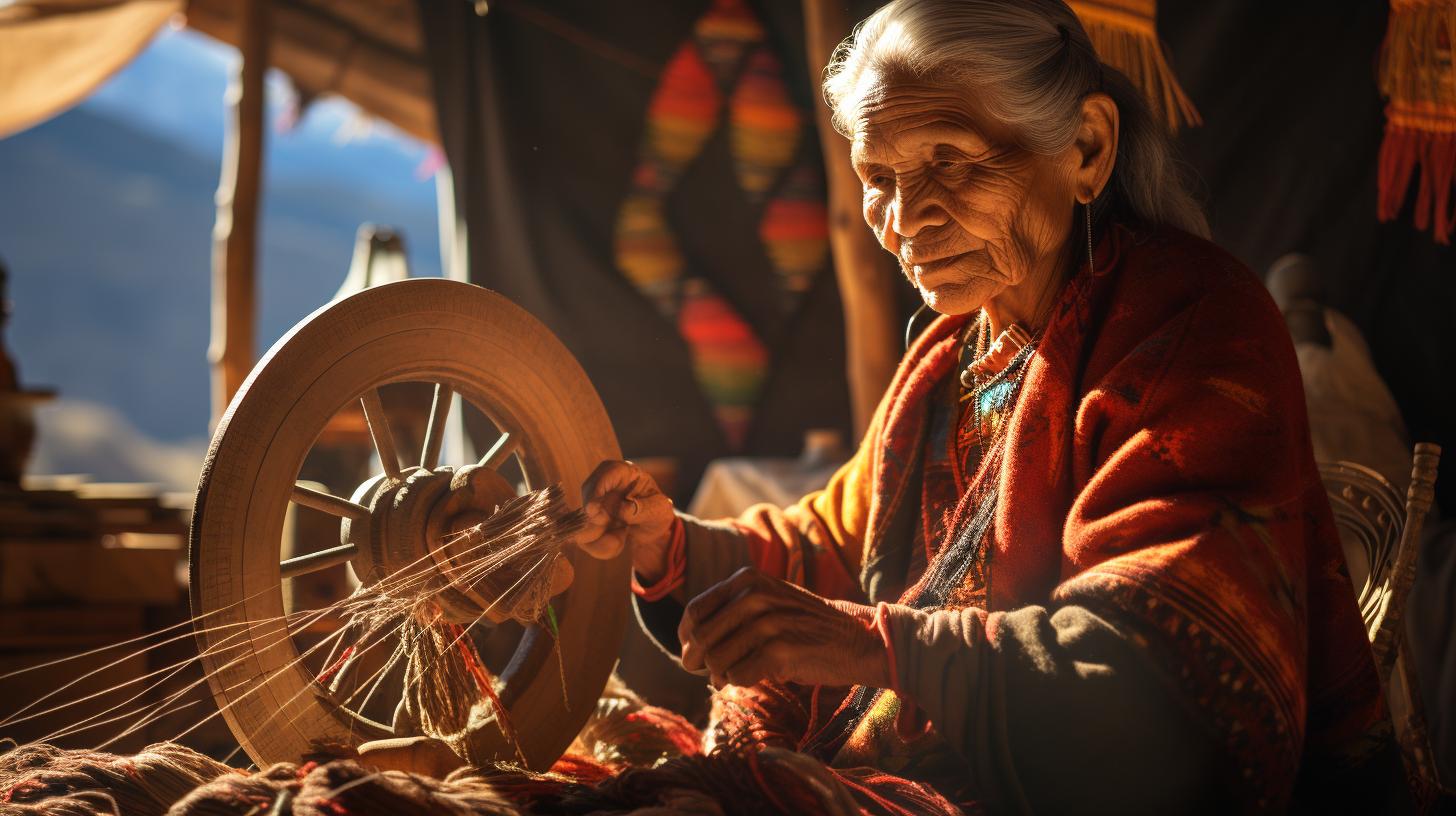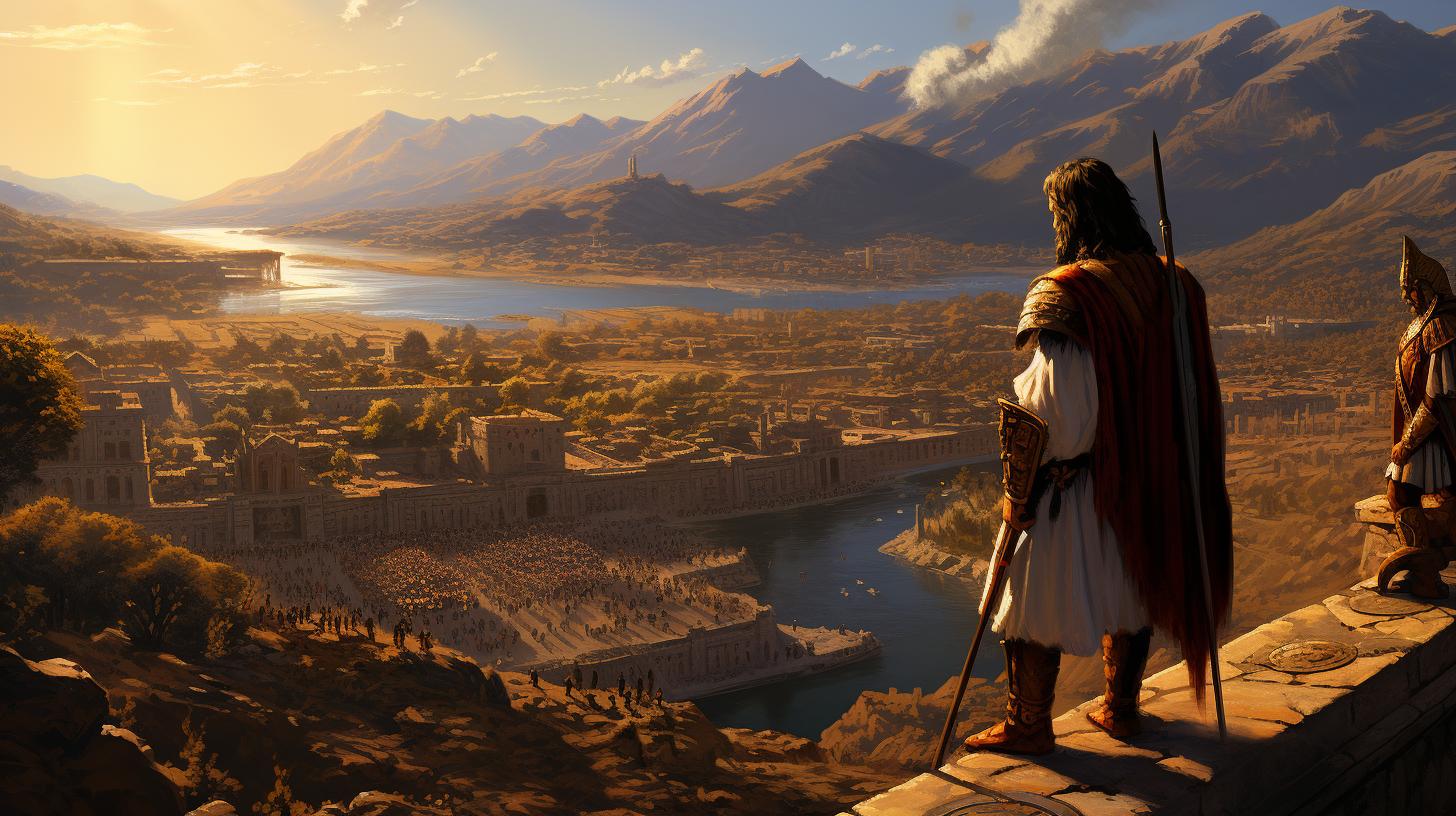Coyllur Goddess: Unveiling the Enchanting Powers of the Ancient Incan Deity

The Coyllur Goddess, an integral part of Incan mythology, holds a significant place in the ancient Incan civilization. Worshiped for her fertility blessings and protection of women and children, she is a symbol of love and devotion.
This article explores the origins, role, legends, powers, and temples dedicated to the Coyllur Goddess. It also discusses her influence on contemporary cultures and the importance of preserving Incan mythology. Additionally, it delves into comparisons with other fertility deities and the cross-cultural connections.
Join us on this journey to understand the legacy of the Coyllur Goddess in today’s world.
Origins of the Coyllur Goddess
The Coyllur Goddess holds a significant place in Incan mythology, representing various aspects of life and spirituality. Understanding her origins provides insight into the rich cultural heritage of the ancient Incan civilization.
The Ancient Incan Civilization
The Coyllur Goddess emerged within the complex tapestry of the ancient Incan civilization, which thrived in the Andean region of South America. The Incas, known for their advanced agricultural practices, architectural marvels, and exceptional engineering skills, built a vast empire that stretched across the Andes Mountains.
With a prosperous society well-versed in agriculture, the Incan civilization flourished for several centuries, integrating a deep reverence for nature and spiritual beliefs into their daily lives. Their connection to the land and the celestial realm served as the foundation for the myths and deities that shaped their worldview.
Mythology and Deities in Incan Culture
Incan mythology abounded with a pantheon of gods and goddesses, each embodying different aspects of nature, society, and human experience. These deities played integral roles in Incan religious ceremonies, rituals, and everyday life.
The Coyllur Goddess, believed to be associated with fertility, love, and protection, held a special place within the hearts of the Incas. Her story intertwined with tales of romance, heartbreak, and the pursuit of happiness, reflecting the human desires and emotions experienced by the Incan people.
Through mythological narratives, the Incan society sought not only to explain the world’s origins but also to provide moral guidance and establish a sense of communal identity. The stories of the deities, including the Coyllur Goddess, were passed down through generations, preserving the wisdom, traditions, and beliefs of the ancient Incan culture.
The exploration of the Coyllur Goddess’s origins sheds light on the intricate tapestry of Incan mythology and provides a glimpse into the spiritual world of this ancient civilization.
The Role of the Coyllur Goddess in Incan Religion
The Coyllur Goddess held a significant role in the religious beliefs and practices of the ancient Incan civilization.
Her presence was deeply intertwined with the spiritual fabric of Incan society, guiding worship and sacred rituals through her divine influence. This section explores two key aspects of her role: Worship and Sacred Practices, and Symbols and Representations.
Worship and Sacred Practices
Worship of the Coyllur Goddess involved elaborate ceremonies and rituals conducted by priests and devoted followers. Her followers would gather in sacred spaces, such as temples and ceremonial centers, to honor and seek her favor.
These rituals included offerings of food, drink, and beautiful textiles, symbolizing devotion and gratitude.
The Incan people believed that by appeasing the Coyllur Goddess through worship, they could secure blessings of fertility, protection, and prosperity.
These rituals aimed to establish a deep connection between the worshipers and the divine presence, fostering a harmonious relationship with nature and the cosmos.
Symbols and Representations
The Coyllur Goddess was often depicted in art, sculptures, and textiles with symbolic elements that conveyed her unique attributes. She was commonly represented as a young woman adorned with traditional Incan jewelry and clothing, showcasing her association with beauty and abundance.
One of the prominent symbols associated with the Coyllur Goddess was the cornucopia, symbolizing fertility and the abundance of the harvest. This representation highlighted her role as a provider of nourishment and sustenance for the Incan people.
Additionally, she was often depicted holding a child, symbolizing her protective and nurturing qualities.
Another symbol closely associated with the Coyllur Goddess was the moon, representing her connection with the changing cycles of nature and the rhythm of life.
The moon’s phases mirrored the ebb and flow of fertility and the nurturing aspects embodied by the Coyllur Goddess.
Overall, the symbols and representations associated with the Coyllur Goddess visually captured the essence of her role as a divine figure connected to fertility, protection, and the cycles of nature.
Legends and Stories Surrounding the Coyllur Goddess
The Coyllur Goddess is the center of captivating legends and stories within the rich tapestry of Incan mythology. These narratives showcase her divine powers and illustrate her significance in Incan culture.
Tales of Love and Heartbreak
One of the most renowned tales featuring the Coyllur Goddess revolves around her heartbreaking love story. It tells of her forbidden love for a mortal man, which resulted in immense tragedy and sorrow.
The story highlights the passion and vulnerability of the goddess, as well as the consequences of defying cosmic boundaries.
Another popular legend recounts the Coyllur Goddess’s role in reconciling estranged lovers.
It is said that those who fervently pray to her, seeking her intervention, are granted guidance and healing in matters of the heart. Her compassionate presence in love stories resonates with individuals seeking solace and clarity in their relationships.
Coyllur Goddess in Epic Incan Narratives
In epic Incan narratives, the Coyllur Goddess is often portrayed as a pivotal figure who aids the heroes in their quests. Her ethereal presence is believed to bring good fortune and protection, granting the heroes the strength and wisdom they need to overcome formidable challenges.
Furthermore, the Coyllur Goddess embodies the interconnectedness of nature and humanity in these narratives. It is said that she symbolizes the bond between mortals and the divine, serving as a bridge between the mortal realm and the celestial realms.
These legends and stories surrounding the Coyllur Goddess not only entertain and inspire, but also provide insights into the beliefs and values of the Incan civilization. They exemplify the profound impact the goddess had on the lives and imaginations of the ancient Incans, immortalizing her as a symbol of love, resilience, and spiritual transcendence.
Understanding the Powers and Attributes of the Coyllur Goddess
The Coyllur Goddess is revered for her multitude of powers and attributes, embodying elements that were essential in the ancient Incan civilization. Let’s dive deeper into two significant aspects of her character:
Fertility and Harvest Blessings
As the embodiment of fertility, the Coyllur Goddess was believed to bless the land with abundant crops and ensure a prosperous harvest.
Incan farmers would offer prayers and sacrifices to her, seeking her favor and guidance for a bountiful yield. She was a beacon of hope for communities heavily dependent on agricultural sustenance.
The fertility aspect of the Coyllur Goddess extended beyond the fields as well. It was believed that she bestowed blessings of fertility upon women, assisting them in conceiving children. Expectant mothers would invoke her name, seeking her protection and aid throughout their pregnancies.
Her nurturing energy was seen as a source of strength and hope for mothers and their growing families.
Protector of Women and Children
The Coyllur Goddess held a significant role as a guardian and protector of women and children in the Incan society. She was revered as a divine presence who ensured the well-being and safety of women, particularly during pregnancy, childbirth, and early childhood.
Women facing challenges or seeking guidance would turn to her for protection and support.
Children were also under the watchful eye of the Coyllur Goddess. Families believed that invoking her name would safeguard their children from harm and illness.
She was seen as a compassionate and benevolent deity, offering solace and protection to the vulnerable members of society.
- She was invoked during childbirth to ensure a safe delivery.
- Mothers sought her blessings for the health and well-being of their children.
- Women regarded her as a protector against the challenges they faced in their lives.
- Her role extended beyond physical protection as she was also believed to offer emotional and spiritual guidance to women and children.
- The Coyllur Goddess held a special place in the hearts of the Incan people, providing them with a sense of security and comfort in their daily lives.
The powers and attributes of the Coyllur Goddess encompassed fertility, abundance, protection, and guidance.
Her influence on the Incan society was vast and enduring, shaping their beliefs, rituals, and values. Exploring these aspects helps us grasp the depth of her significance and appreciate the rich mythology surrounding her divine presence.
Temples and Rituals Dedicated to the Coyllur Goddess
Temples dedicated to the Coyllur Goddess were regarded as sacred sites for devotion in Incan culture. These architectural marvels reflected the significance and reverence attributed to the deity. Visitors embarked on spiritual journeys to these temples, seeking blessings, healing, and guidance.
Sacred Sites for Devotion
The most renowned temple dedicated to the Coyllur Goddess was Ch’uriquka, located high in the Andean mountains. Perched majestically amidst breathtaking natural landscapes, this temple served as a celestial haven for worshippers.
Pilgrims undertook arduous journeys to express their devotion, making offerings and seeking spiritual connection.
Another notable shrine was Pachamama, known as the Incan Earth Mother. This sacred site was believed to be intertwined with the Coyllur Goddess, emphasizing the deity’s connection to fertility, agriculture, and the cycles of nature.
Pilgrims visited Pachamama to honor both goddesses and seek blessings for bountiful harvests.
Ceremonies and Offerings
Ceremonies dedicated to the Coyllur Goddess were marked by vibrant rituals, filled with music, dance, and elaborate offerings. These ceremonies aimed to invoke the deity’s blessings and ensure protection for communities.
During these ceremonies, pilgrims presented intricate floral arrangements, symbolizing fertility and abundance. They also offered colorful textiles and intricately woven garments as a sign of devotion and respect. Sacrifices in the form of animals or valuable goods were sometimes made to appease the goddess and show unwavering commitment.
The rituals often involved traditional dances and music, symbolizing a connection between the mortal world and the divine realm. Devotees would perform ritualistic movements, expressing their devotion and seeking blessings from the Coyllur Goddess.
These ceremonies and offerings showcased the deep-rooted belief in the goddess’s powers and the unyielding faith of the Incan people.
- Fragrant flowers and petals
- Exquisitely woven textiles
- Precious gemstones and metals
- Animal sacrifices
These offerings were meticulously prepared and presented with utmost reverence, solidifying the devotion and connection between worshippers and the Coyllur Goddess.
Rediscovering the Coyllur Goddess in Modern Times
In the present day, the enchanting presence of the Coyllur Goddess continues to influence and inspire contemporary cultures worldwide. Her mythological significance and symbolism have found their way into various aspects of modern society, from art and literature to music and fashion.
Influence on Contemporary Cultures
- The Coyllur Goddess serves as a symbol of love, fertility, and female empowerment in many artistic expressions. Paintings, sculptures, and murals featuring her image adorn galleries and public spaces, captivating audiences with her ethereal beauty and divine aura.
- Her story is often woven into works of literature and poetry, enriching narratives with elements of mysticism and spiritual enlightenment.
Writers and poets draw inspiration from her tales of love and invoke her name as a muse.
- In the realm of music, the Coyllur Goddess is celebrated through melodious tunes and enchanting lyrics.
Musicians compose songs that pay homage to her divine qualities and the timeless themes of romance and devotion associated with her.
- Fashion designers incorporate the essence of the Coyllur Goddess into their creations, showcasing her grace and allure through intricate patterns, flowing fabrics, and vibrant colors.
Her influence can be seen on runways and in high-end fashion magazines.
Revival of Incan Traditions and Beliefs
In recent years, there has been a resurgence of interest in Incan traditions and beliefs, leading to a revival of the worship and reverence for the Coyllur Goddess among indigenous communities and spiritual enthusiasts.
Sacred Sites for Devotion
- Ancient temples dedicated to the Coyllur Goddess are being rediscovered and restored, attracting pilgrims and curious visitors alike. These sacred sites provide a space for individuals to connect with the divine energy associated with the goddess and partake in rituals and ceremonies.
- Pilgrimages to these temples have become popular, drawing people from different walks of life who seek spiritual awakening and a deeper understanding of the Coyllur Goddess and her messages of love and protection.
Ceremonies and Offerings
Ceremonies and offerings are performed to honor the Coyllur Goddess and seek her blessings.
These rituals often involve dances, music, and prayers, as devotees express their gratitude and devotion to the divine feminine presence.
The offerings made to the Coyllur Goddess range from colorful flowers and fruits to symbolic items representing fertility and abundance.
These acts of devotion aim to establish a profound connection with the divine and invoke her blessings for a harmonious and prosperous life.
Through the resurgence of Incan traditions and the dedicated worship of the Coyllur Goddess, a sense of cultural identity is fostered, preserving her legacy and the rich heritage of the ancient Incan civilization.
Exploring Similar Goddesses in Different Cultures
Comparisons with other Fertility Deities
The Coyllur Goddess, with her associations to fertility, is reminiscent of other revered fertility deities in various cultures. Let’s dive into some intriguing parallels and comparisons.
Ishtar (Mesopotamian Mythology)
Ishtar, the Mesopotamian goddess of love, beauty, and fertility has several similarities to the Coyllur Goddess. Both deities are revered for their ability to bestow blessings of fertility and ensure bountiful harvests.
Ishtar’s significance in the ancient world is reflected in her worship and sacred rituals, similar to the devotion seen for the Coyllur Goddess in Incan culture.
Aphrodite (Greek Mythology)
Aphrodite, the goddess of love and beauty in Greek mythology, shares certain traits with the Coyllur Goddess. Both entities embody the essence of love, desire, and enhancement of romantic relationships.
Additionally, both goddesses were worshipped and offered prayers for blessings in matters of fertility and procreation.
Cross-cultural Connections and Influences
The mythology of different cultures often showcases fascinating connections and influences, highlighting the interconnectedness of ancient civilizations worldwide. The Coyllur Goddess and similar deities have left indelible imprints on various cultures, transcending geographical boundaries.
The Power of Fertility Across Cultures
Fertility deities have been revered and worshipped in numerous cultures throughout history. The universal recognition of the importance of fertility and the belief in divine entities that govern it showcases the profound impact these deities have had on shaping human civilizations.
Cultural Exchange and Reverence
Cultures across the globe have been influenced by one another, leading to the sharing of myths and legends. The Coyllur Goddess and similar deities have undoubtedly played a role in these exchanges.
Through trade routes, conquests, and cultural diplomacy, beliefs in fertility goddesses were transmitted and embraced by different civilizations, leaving remarkable traces in their respective mythologies.
Unveiling the Legacy of the Coyllur Goddess
Impact on Incan Society and Belief Systems
The Coyllur Goddess played a significant role in shaping Incan society and belief systems. Considered a divine figure of utmost importance, she influenced various aspects of daily life. Her association with love and fertility led to her being revered as a deity who blessed marriages, ensured successful harvests, and protected women and children.
Incan society revered the Coyllur Goddess as a powerful entity who could influence the outcome of important events and bring prosperity to the community. Temples dedicated to her worship were constructed across the Incan empire, showcasing the significance of her presence and the deep devotion she inspired.
Her impact went beyond religious rituals and permeated social and cultural aspects of Incan life. The Coyllur Goddess symbolized love and unity, fostering a sense of community and togetherness among the Incan people.
Importance of Preserving Incan Mythology
The preservation of Incan mythology, including the legacy of the Coyllur Goddess, holds immense importance in our modern times. Understanding the beliefs and traditions of ancient civilizations not only enhances our knowledge of history but also allows us to appreciate the rich cultural heritage that has shaped our present.
Preserving Incan mythology ensures that the wisdom, values, and stories of the past continue to inspire and guide future generations. By studying the Coyllur Goddess and the broader Incan belief system, we gain insights into the complexities of human spirituality and how it intertwines with the natural world.
Furthermore, by cherishing and honoring the Coyllur Goddess, we pay homage to the indigenous cultures that thrived in the Andean region long before colonization. It serves as a reminder of the resilience and spiritual depth of ancient societies and encourages us to celebrate and respect diverse belief systems.
Through continued research, documentation, and education, we can ensure that the legacy of the Coyllur Goddess remains alive, allowing us to connect with the wisdom and spiritual practices of our ancestors.
In summary:
- The Coyllur Goddess had a profound impact on Incan society, influencing various aspects of life.
- Preserving Incan mythology is crucial to understanding our cultural heritage and honoring indigenous cultures.
- Studying the Coyllur Goddess enables us to connect with our spiritual past and appreciate the wisdom of ancient civilizations.
Frequently Asked Questions about the Coyllur Goddess
Who was the Coyllur Goddess?
The Coyllur Goddess holds a significant place in Incan mythology as a revered deity associated with love, devotion, and protection.
She embodies the spirit of fertility and is often depicted as a beautiful goddess adorned with sacred symbols. While specific details about her origin remain shrouded in mystery, her presence in Incan culture and religious practices showcases the profound importance placed on her by the ancient civilization.
What role did she play in Incan religion?
Within Incan religion, the Coyllur Goddess held a crucial role as a source of guidance and assistance. As a deity of fertility, she was believed to bless the land with abundant harvests and ensure the prosperity of the people.
Additionally, she served as a protector of women and children, offering her nurturing presence and safeguarding their well-being. The Coyllur Goddess was revered through worship, sacred rituals, and the dedication of temples where devotees sought her blessings and guidance.
.




















